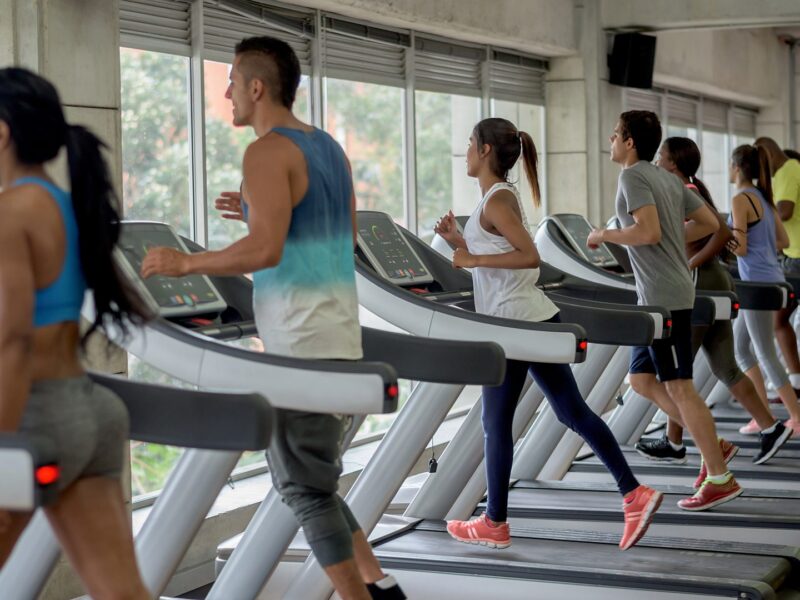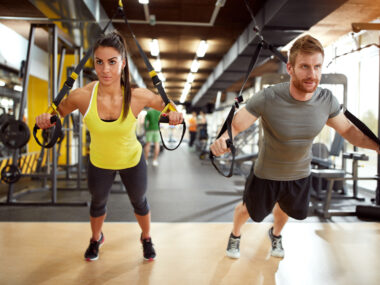A treadmill is a well-liked train machine used for strolling, jogging, or operating indoors. It supplies a handy and managed approach to interact in cardiovascular exercises and enhance bodily health.
Construction and Parts
- Working Belt: The shifting floor on which you stroll, jog, or run.
- Body: The sturdy construction that helps the operating belt and varied parts.
- Motor: Treadmills have an electrical motor that powers the motion of the operating belt.
- Console: The management panel shows info akin to velocity, distance, time, and coronary heart price. It additionally permits customers to regulate settings.
- Handlebars: Most treadmills have handlebars for stability and stability. Some fashions have extra options like coronary heart price sensors.
- Incline Mechanism: Many treadmills may be adjusted to simulate uphill operating by elevating the entrance of the operating floor.

Varieties of Treadmill
- Guide Treadmills: These are powered solely by the person’s motion. They’re compact and extra inexpensive however lack superior options.
- Motorized Treadmills: These have a motor that drives the operating belt, providing adjustable velocity and incline choices. They’re extra versatile and appropriate for varied health ranges.
Advantages of Treadmill Exercises
- Cardiovascular Health: Treadmills present efficient cardio exercises that may enhance coronary heart and lung well being.
- Weight Administration: Common treadmill use might help with weight reduction and weight administration.
- Comfort: Treadmills provide a handy approach to train indoors, no matter climate situations.
- Customization: Customers can management velocity and incline to tailor exercises to their health ranges and objectives.
- Monitoring: Many treadmills have coronary heart price monitoring options, permitting customers to trace their health progress.
- Joint Well being: In comparison with operating on laborious outside surfaces, treadmills provide a extra cushioned floor that may be gentler on joints.
Exercise Choices
- Strolling: Treadmills are appropriate for brisk strolling, which is a low-impact train very best for rookies and people with joint points.
- Jogging: Customers can improve the velocity for a jogging exercise, which supplies extra depth and calorie burn.
- Working: Treadmills enable for high-intensity operating exercises, making them well-liked amongst severe runners for coaching.
Security Concerns
- Customers ought to familiarize themselves with the treadmill’s controls and security options.
- It is essential to make use of the protection clip or lanyard, which may cease the treadmill in case of a fall.
- Correct footwear is crucial to forestall slipping and reduce pressure on the ft and knees.
Further Options
- Fashionable treadmills typically include varied options like preset exercise packages, leisure choices (TV screens, music connectivity), and connectivity to health apps.
Upkeep
- Treadmills require periodic upkeep, together with belt lubrication and cleansing, to make sure clean operation.
Security Precautions
- Customers ought to comply with security pointers and never exceed their bodily capabilities when utilizing a treadmill.
- Preserve correct posture and keep away from holding onto the handlebars too tightly to forestall pressure.
Selection in Exercises
- To keep away from monotony, customers can range their treadmill exercises by adjusting velocity, incline, and incorporating interval coaching.
House Concerns
- Treadmills range in measurement, so customers ought to take into account obtainable house when deciding on a mannequin for house use.
In abstract, Treadmills are versatile train machines that present a variety of health advantages, making them a preferred alternative for each rookies and skilled athletes. Additionally for cardiovascular health, weight administration, or comfort, treadmills provide an efficient approach to keep lively and wholesome indoors.










